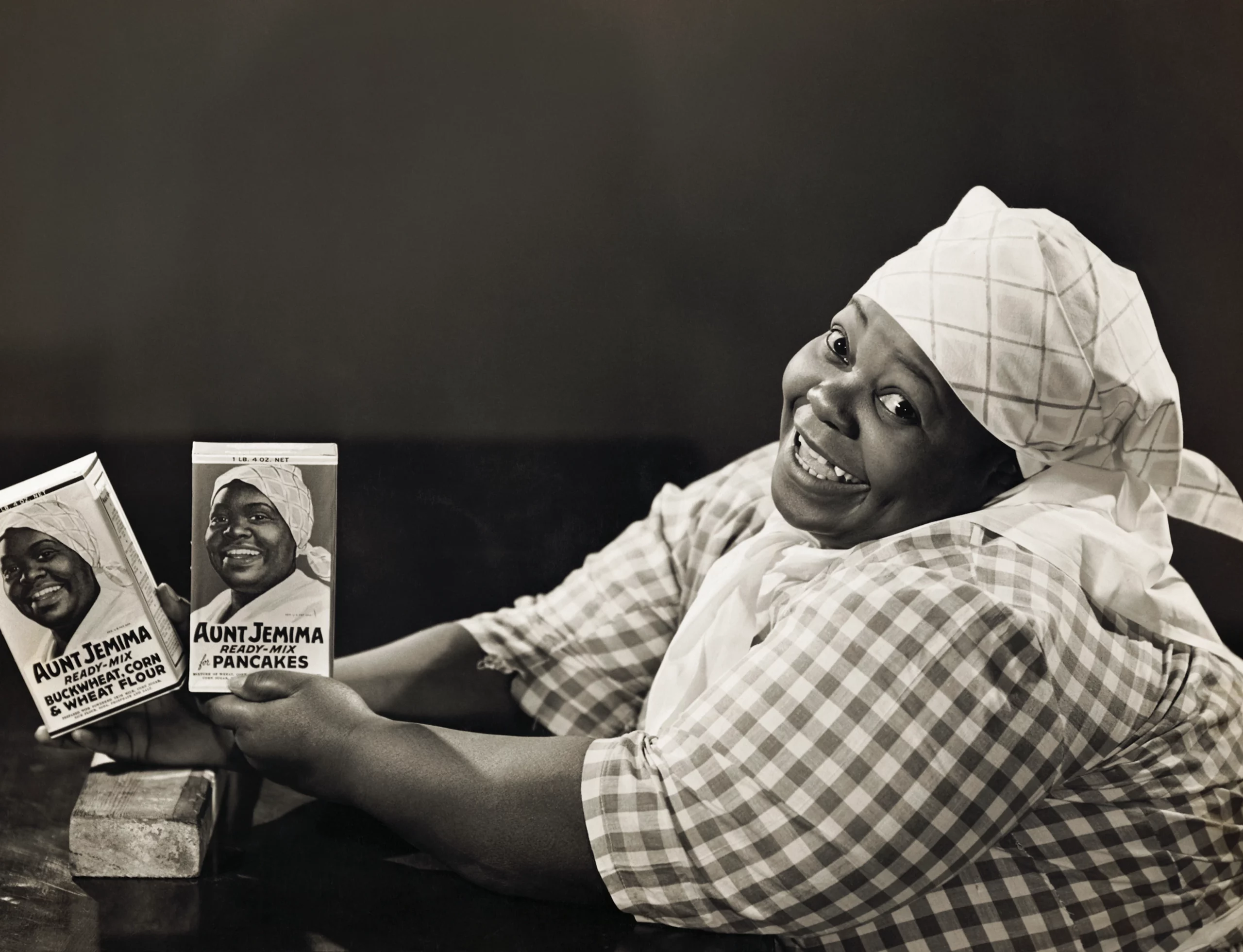Photo by Bettmann Collection/Getty Images
May 25, 2020. Igniting what has come to be known as the “Summer of Racial Reckoning,” the murder of George Floyd at the hands of Minneapolis police sparked international outrage. Donning masks and handmade signs, protestors from around the world braved the COVID-19 pandemic to speak out against anti-Black racism in the United States.
As protests gained prominence in the media, many corporations began pledging their support for the movement through statements and donations. For Quaker Oats, that meant officially acknowledging the racial stereotype that made their product, Aunt Jemima, a success. In a June 2020 press release, the company announced that the pancake mix would be rebranded.
For more than a century, you could find Aunt Jemima at your local grocery store boxed on a shelf. She fulfilled a post-Reconstruction fantasy harkening back to a mythic slavery that never was—one in which Black women happily took care of white households at the expense of their own.
That fantasy was further fixed in the American psyche with Hattie McDaniel’s performance as Mammy in the 1939 film Gone with the Wind. As America’s two favorite mammies took hold in 20th century popular culture, African Americans navigated a complex relationship with the racial stereotype—actively resisting its depictions of Black women as subservient while simultaneously celebrating McDaniel’s Oscar win in spite of Hollywood’s color line.
Originally advertised as the homemade pancake recipe of a formerly enslaved woman, Aunt Jemima’s ready-made mix was the invention of two men, Chris Rutt and Charles Underwood, in 1889. While the recipe was their own, Rutt and Underwood drew upon minstrelsy, a form of racist entertainment that depicted individuals of African descent using actors in blackface, to sell their product. Aunt Jemima, a common character in minstrel performances, was their muse.
After a year, Rutt and Underwood sold their pancake mix to Davis Milling Company in 1890. Changing marketing tactics, the company sought out an African American woman who would not only sell the product but embody Aunt Jemima in the flesh. In Chicago, they found Nancy Green, a formerly enslaved woman from Kentucky who lived on the city’s Southside. She was working as a domestic—a role not far removed from the character she would portray for the rest of her life. Green first appeared as Aunt Jemima at the 1893 Chicago World’s Fair, where she cooked pancakes, sang songs, and spoke about plantation life to curious visitors.

After Green’s death in 1923, Aunt Jemima—now under the Quaker Oats brand—continued to live on through many African American women, including Anna Robinson, pictured above. Like Green, Robinson was a native Kentuckian living in Chicago. At the 1933 Century of Progress International Exposition, she debuted as Aunt Jemima while overseeing an automatic griddle.
Unlike her predecessors, Robinson’s appearance—her rounded face and full figure—bore a strong resemblance to the mammy stereotype on which Aunt Jemima was based. Her embodiment lent further credibility to the caricature—one that was already supported by thousands of Black women working as domestics in white households.
Taking advantage of these similarities, Quaker Oats commissioned an artist to paint Robinson in costume. This portraiture of Robinson, with her head wrapped in a kerchief, crisp blouse, and broad smile, adorned boxes of Aunt Jemima products well into the late 1960s.

Photo by Michael Ochs Archives/Stringer/Moviepix/Getty Images
An important expression of a mid-twentieth-century nostalgia for the Lost Cause, Gone with the Wind premiered in Atlanta on December 15, 1939. Based on Margaret Mitchell’s popular novel, the film follows the romantic exploits of Scarlett O’Hara, the daughter of a Georgian plantation owner, during the Civil War and Reconstruction era.
Cast opposite Vivien Leigh’s Scarlett was Hattie McDaniel as Mammy. Although dressed almost identically to Robinson’s portrayal of Aunt Jemima, McDaniel’s depiction of Mammy was anything but. While she consoles Scarlett, she also chastises her in a brash, yet loving manner. In a notable scene, Mammy yells at Scarlett to “Come on in here!” from an upstairs window of the main house, while Scarlett defiantly walks away.

Although white audiences praised McDaniel’s performance, the African American press was initially less enthusiastic. Many early reviews came solely from interpretations of Mitchell’s novel, since the film was not shown in African American theaters until March 1940.
After it became available to Black audiences, the response became more nuanced. While many found power in McDaniel’s performance despite the storyline, others protested. One such protest included two women holding signs that proclaimed, “You’d be sweet too under a whip!” and “’Gone with the Wind’ hangs the free Negro!”
While Aunt Jemima and Gone with the Wind’s Mammy comforted white consumers in a changing world, their very existence and popularity was a threat to African Americans fighting for freedom and equality in the early 20th century.

Listen to the author:
Learn More:
M.M. Manring, Slave in a Box: The Strange Career of Aunt Jemima (Charlottesville: University of Virginia Press, 1998).
Micki McElya, Clinging to Mammy: The Faithful Slave in Twentieth-Century America (Cambridge: Harvard University Press, 2007).





